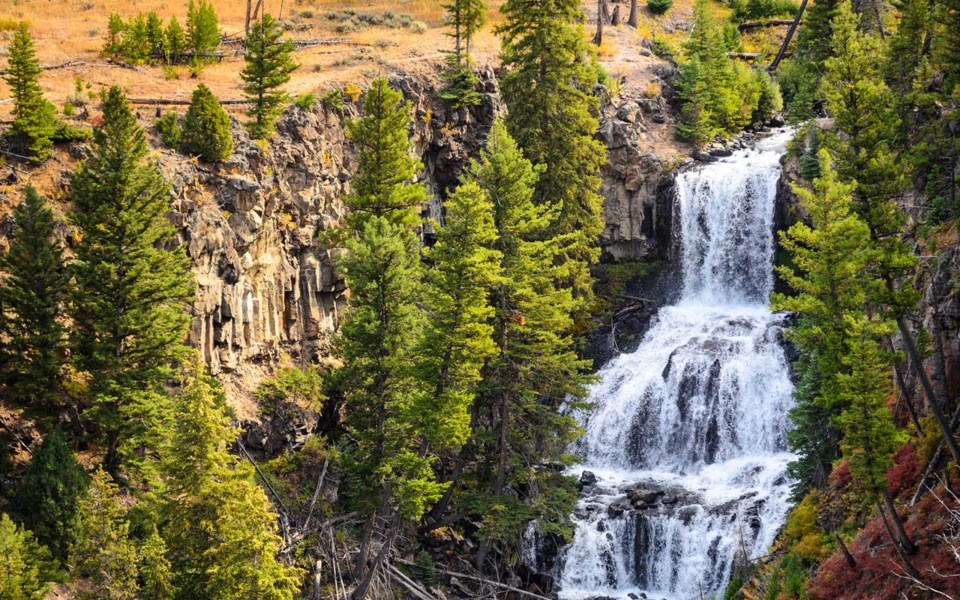JACKSON, Wyo. – Reddish plumes of smoke barreled skyward from Yellowstone National Park 30 years ago this week as a nation wondered: What had gone wrong? Who had lost this cherished national treasure?
The fires had started in June after two years of drought. At first, there were no worries. These small fires were mostly caused by lightning. The National Park Service let them burn. Before the late 1960s, fires were generally believed to be detrimental for parks and forests, and management policies were aimed at suppressing fires as quickly as possible, notes the Wikipedia entry on the Yellowstone fire. However, as the beneficial ecological role of fire became better understood, the let-burn policy was adopted under controlled conditions.
Fires had their own mind. Yellowstone was overdue for a big one. The small fires merged, then leap-frogged across the forests. Still, 25,000 firefighters made enough progress that by early August, the Park Service announced the fires contained.
Then the fires roared back to life. On one day in August, flames covered 60,702 hectares. Joan Anzelmo was spokeswoman for Yellowstone during that summer of smoke and fire. She tells the Jackson Hole News&Guide that she remembers that day vividly. "It looked like the world was coming to an end," she says.
The world didn't end, but there was another scare in early September when strong winds in a cold front fanned flames. Old Faithful Inn itself was threatened. The historic, knotty-pine lodge had been built in 1903-04, the very essence of parkitecture comfort and leisure.
Recalling that scare in 2008, National Public Radio recalled what Bob Barbee, then the park superintendent, had said at the time. "You know, there's a lot of things that can burn in Yellowstone and it's probably of no great consequence, but the Old Faithful Inn is the Sistine Chapel, and under any circumstances we don't lose the Old Faithful Inn."
The hotel survived as did all but 19 of the 400 or so buildings in the Old Faithful complex. Then, a few days later, on Sept. 11, rain and snow arrived to stall the fire. On Nov. 18, it was declared totally extinguished. Nearly 323,748 hectares, or nearly a third of the national park, had been blackened.
There had been huge fires before. Three million acres in Idaho and Montana burned in 1911. Timothy Egan's book, The Big Burn, told a part of that story. In British Columbia, the Kech fire in 1958 burned 225,814 ha, a figure not eclipsed in that province until 2017.
But yet, if fire is somewhat periodic, the trend since Yellowstone has been clearly toward more frequent and larger fires, what some now call megafires. The News&Guide points out that wildfires in the 1970s burned on average 1,214,056 ha/year in the United States. The number of fires has not increased, but the scale has: a record 4,046,856 ha burned in 2015.
A warmer climate is one reason for the larger fires. Fire season in western North America has lengthened an average of 78 days between 1970 and 2015. Temperatures during night, when fires tend to quiet down, have remained higher—a phenomenon noted in the fires this summer. And overall temperatures have increased. July was the warmest month in California history, climate scientist Daniel Swain noted in his California weather blog. It was, he added, a month of unprecedented early season fires in the Golden State.
Andrew Norman, a wildfire specialist on the Bridger-Teton National Forest who had been at the Yellowstone fire in 1988, told the News&Guide that he and others used to joke that they had lived through a once-in-a-lifetime experience. "Now a lot of us have had quite a few other once-in-a-lifetime experiences since then," he said.
Rock-throwers advised not to do it from tops of peaks
BANFF, Alta. – It's not the first time that hikers have hurled rocks off the top of mountains. But this time, on a prominent mountain near Banff National Park, the bravado was videoed and posted on social media.
No maliciousness was intended, and the hikers have apologized on social media. But it's never a wise thing to do, reminded public lands officials, given that there might be hikers or climbers below.
Colorado ski resort also raising minimum wage
WINTER PARK, Colo. – Winter Park Resort will raise the minimum wage this coming ski season to $12, a buck above last year's minimum. That compares with Colorado's state-mandated minimum wage of $10.20. Aspen Skiing Co. meanwhile, will jack its rates to $13.50, compared to $12 last year.




